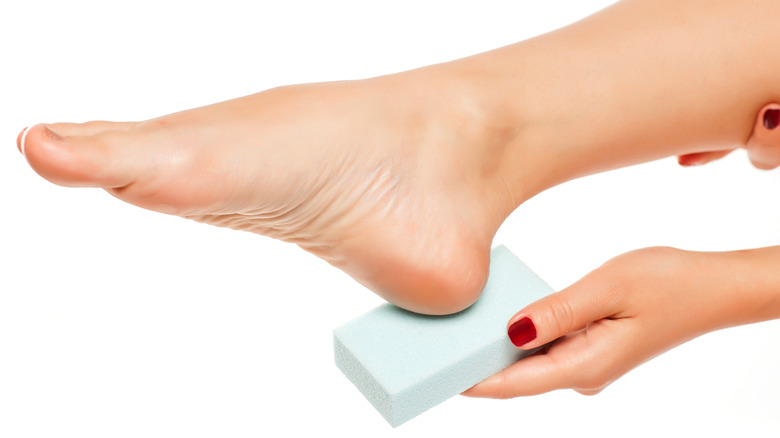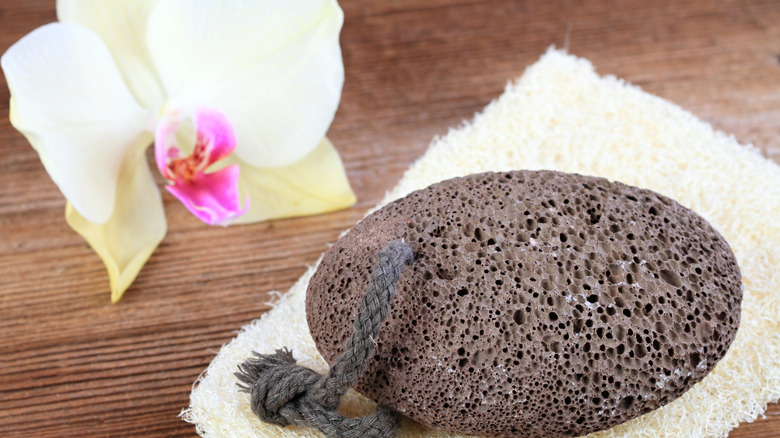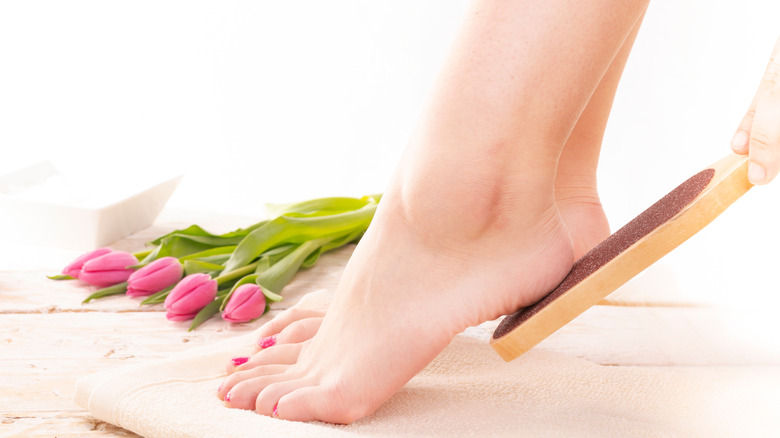Pumice Stone Vs. Foot File: Which Is Better For Your Feet?
If you've ever gotten or given yourself a pedicure, chances are you've used either a pumice stone or a foot file. Perhaps you've used both foot care tools. Each device helps scrap dead skin and smooth calluses from your heals and other areas of your foot (via Footfiles). However, given how much your feet have to do every day, you likely have some spots on your soles that need special attention to help keep your feet soft and healthy — not to mention sandal-ready.
Despite what you might think, according to Pediaa, these two exfoliation tools aren't entirely interchangeable, though, when it comes to your pedicure. One works but is less harsh on your skin, while the other might have a bit more oomph behind it, if you need to do some serious dead-skin removal or callous smoothing. Read on to find out how to choose between a pumice stone and foot file the next time you get or give yourself a pedicure.
Here's when you should choose a pumice stone
According to Footfiles, a pumice stone is a natural, porous pedicure tool. Made from volcanic rock or other materials, they're among the most popular items used for foot care. They help soften calluses and corns which will help ensure you walk with less friction on the problem areas (via Footfiles). You should use one of you have softer, more sensitive feet.
Also, Foot Files revealed that one of the best pros of a pumice stone is that it effectively smooths skin without causing tears to your feet. However, such tears could end up leading to nasty infections that last far longer than your pedicure, so avoiding them is critical. Podiatrist Joy Rowland, DPM, explained why tears are dangerous (via Cleveland Clinic). "Sometimes the skin gets cut during the pedicure, then you put your feet inside the bowls. The bacteria from the legs, which is the natural flora from the skin, is swirling around inside the bowl and gets inside the cut," Dr. Rowland said. "This can cause an infection inside the skin."
Bustle reported that you should choose a stone with larger pores to help properly exfoliate your feet. Also, a variety of surfaces helps ensure that the tool reaches all the areas you want to smooth. To use, simply soak feet for 10 minutes, gently rub the stone over the rough places, rinse the rock, and dry your feet before applying moisturizer (via Pediaa).
Here's when you should choose a foot file
Footfiles shares that you should use a foot file when you need a bit more help smoothing your soles. These handheld devices, also called foot buffers, work more like an emery board or rough metal, filing away dead skin like sandpaper. You can get a manual or electric one, depending on your preference. You'll know you need to consider this tool if a pumice stone doesn't provide the results you hope to achieve (via Pediaa). It's challenging to find a foot file that is strong enough to file away your problem areas while keeping the new, healthy skin below it unharmed.
Using a foot file works similarly to using a pumice stone. According to Pediaa, you should start by soaking your feet for at least 10 minutes. Follow the soak up with using the file to scrub your problem areas. Finally, dry your feet, and use a moisturizer to help further smooth your soles. If you have diabetes, you should not use devices that could cause tears, because they could lead to infections. If you have any questions, be sure to discuss them with your doctor.


